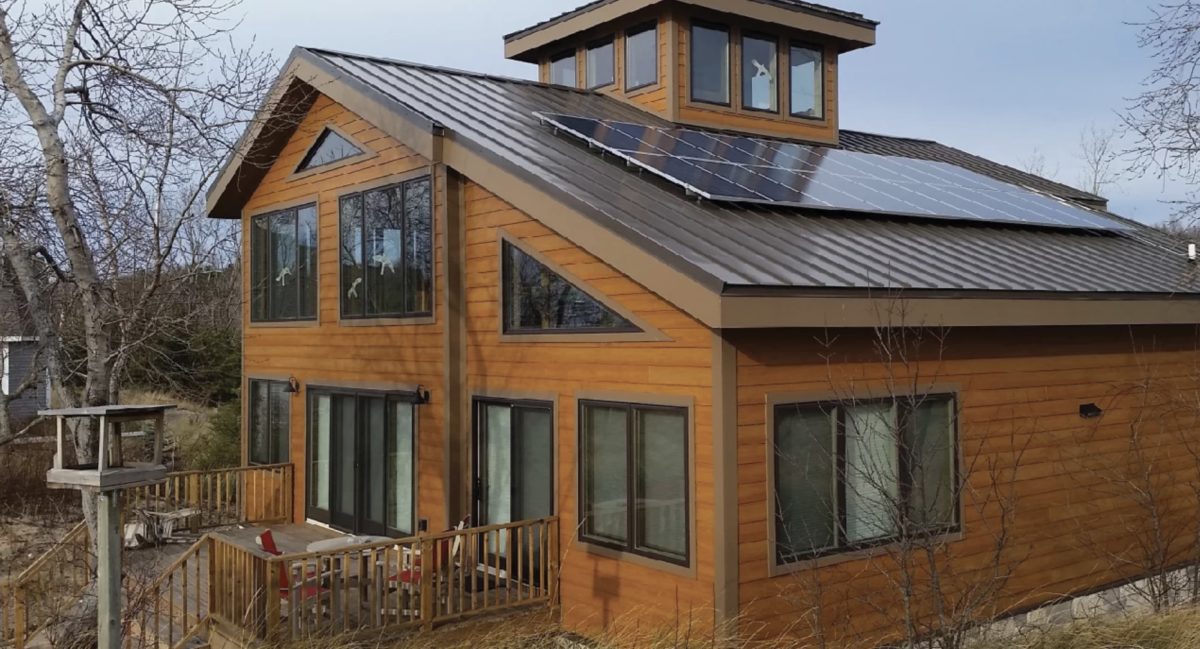Rooftop solar is worth 24¢/kWh in the Michigan territory served by Consumers Energy, well above the 14¢ to 17¢/kWh that the utility’s net metering customers currently receive for the electricity they send to the grid.
The Solar Energy Industries Association’s Director of Rate Design Kevin Lucas presented that finding in testimony in a Consumers Energy rate case.
Lucas concluded that rooftop solar “outflow energy” is “more valuable than average energy,” and that residential customers with solar are less costly to serve than other residential customers.
A key factor in the high value of rooftop solar, Lucas noted, is the “much lower” demand of customers with rooftop solar at the time of the system peak demand, compared to similar customers without solar. That means that customers with rooftop solar lower the system peak demand, thus reducing the need for costly generation and transmission capacity.
Rooftop solar customers, Lucas testified, also export much of their power during the utility’s “critical peak” hours of 2-6 p.m. on weekdays. He noted that the utility offers a “critical peak pricing” rate for residential customers designed to reduce afternoon demand on days when the utility calls a CPP event—when customers on that rate must pay 95¢/kWh for afternoon power.
Lucas proposed that Michigan regulators establish residential rates in a way that shares the savings created by rooftop solar, between those who own rooftop solar and other residential customers. He suggested that the savings be allocated 25% to rooftop solar owners, to incentivize further solar installations, and 75% to other residential customers, to drive residential rates down.
Lucas challenged a number of approaches used in a Brattle study that the utility used to show the cost of serving residential customers who have solar. He concluded that state regulators “should disregard the Brattle study upon which [the utility] relies.” Lucas describes his critique of the utility’s analysis, and presents his own analysis, in 68 pages of testimony.
Value of solar
Several organizations that jointly filed Lucas’s testimony, as well as testimony from other experts, recommended that Michigan regulators “initiate a comprehensive statewide study into the value of solar,” testified William Kenworthy, Vote Solar’s regulatory director for the Midwest.
Dr. Gabriel Chan, a University of Minnesota professor who testified in his personal capacity, suggested that Minnesota’s approach to a value of solar analysis could be a useful model.
The joint testimony was filed by the Environmental Law & Policy Center, on its own behalf and on behalf of the Ecology Center, the Great Lakes Renewable Energy Association, SEIA, and Vote Solar.
This content is protected by copyright and may not be reused. If you want to cooperate with us and would like to reuse some of our content, please contact: editors@pv-magazine.com.








“He suggested that the savings be allocated 25% to rooftop solar owners, to incentivize further solar installations, and 75% to other residential customers, to drive residential rates down.”
If I was a rooftop solar owner in MI or an installer I would want it to be at least 50/50 and prefer the split of 75/25 since I would have actually forked over the money to install solar. 25/75 doesn’t really seem fair to the one who made the investment that they should get the least amount of return
As a current MN resident after 45 years in Michigan I witnessed the true value of having the VOS discussion take place. It opened many doors here and MN is enjoying the fruits. I think the ratio of 75/25 is fine, a nice carrot to build understanding and support.
I have 2k of solar on my home roof, for the past 13 years producing 34 1/2 % of my electricity as a Consumers Energy customer. I agree with John’s comment of 6/29/2020 of a 75/25 split. I support 75/25 because I made and maintain the “capital investment” of my system and “maintain” it as does CE with their equipment. I did have some storm damage and repair costs! Another value of the power I deliver into the grid is that there is “very little line loss” cost because it is used by my neighbors next door. Another value that solar producers like me should get is the “Carbon Tax” value. Zero carbon emissions with solar!
The more residential rooftop systems installed, will lower the need for or the invasion of outside companies coming in and putting up solar farms, exploiting the market, and taking it’s profits out of state. Michigan does not have a company big enough to build and profit from it’s own solar farms. This is where people need to understand investing in your own system is best for payback and profit. Leasing out acreage to out of state companies is not the best way to help the local community prosper from solar, it also has been known to bother adjacent property owners, and cause complicated zoning issues loss of good farm land etc.
I also believe for my investment there should be a better return
Dan K, solar advocate and consultant from WA state weighing in. I attended a series of meeting and classes in the Seattle area in 2009. Utility companies from WA, OR, and ID had representatives speaking at these events. At that time the utilities were promoting home solar, including supporting ITC and Net Metering at a positive rate, for the simple reason that building additional generation would be extremely expensive and problematic for them.
I’ve been in Utah for 5 years now, retired from Aerospace and getting more involved with Solar here. The utilities are not as “prosolar”, even though this is sun country. When someone like myself pins down Rocky Mt Power officials in meetings and in private, they usually relent to the argument that renewables are the future. But the energy and commitment is still not there. Solar activists have their work cut out for them.